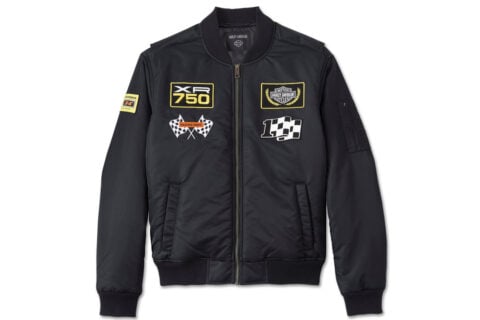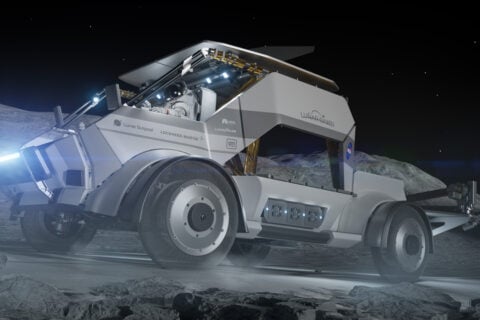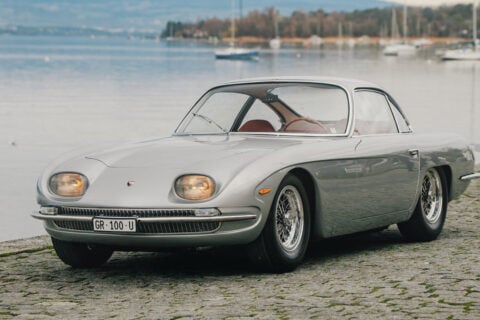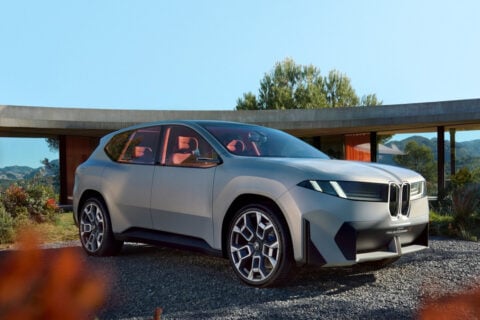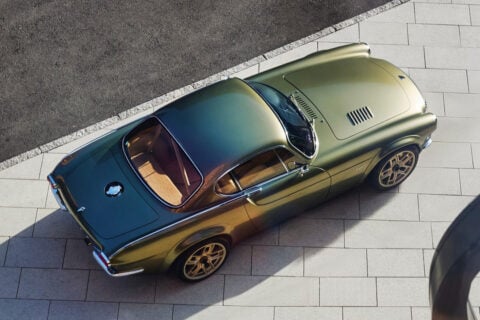For 2018, long-suffering F1 entrant Sauber returns from purgatory as a partner of Grand Prix racing legend Alfa Romeo to launch its surprising C37, matching tour-de-force engineering with a striking new livery and a fresh competitive attitude.
Sauber Alfa Romeo has completed its rags-to-riches transformation for the 2018 season, employing the newest speed-think developments thanks to its close association with Ferrari. If the massively-upgraded combination of grip, handling and power work as pundits suggest, the Sauber/Alfa Romeo will be mid-pack threats by the Spanish GP in May.
It takes just a brief look at the Sauber Alfa Romeo C37 to spoil the suggestion the association with Ferrari/Alfa Romeo is a mere marketing and political power exercise. Under the direction of Frédéric Vasseur and Technical Chief Jörg Zander, the team’s full technical association with Ferrari means Sauber/Alfa portfolio now bristles with performance thanks to tour-de-force designers, aggressive engineering, and the Scuderia’s current power unit, gearbox and aero-guidance.
Watching the Sauber slither around Austin’s Circuit Of The America’s last season, it was clear that last year’s team had fought back from its low rear-end grip problem at the start of the season to a state of balanced but still low-overall grip. For 2018, those images should be forgotten for good. Sauber has emerged with fresh and intriguing baseline aero development and, with its now full-on Ferrari power unit, the team looks to cut a points-reaping swath through this season’s F1 midfield.
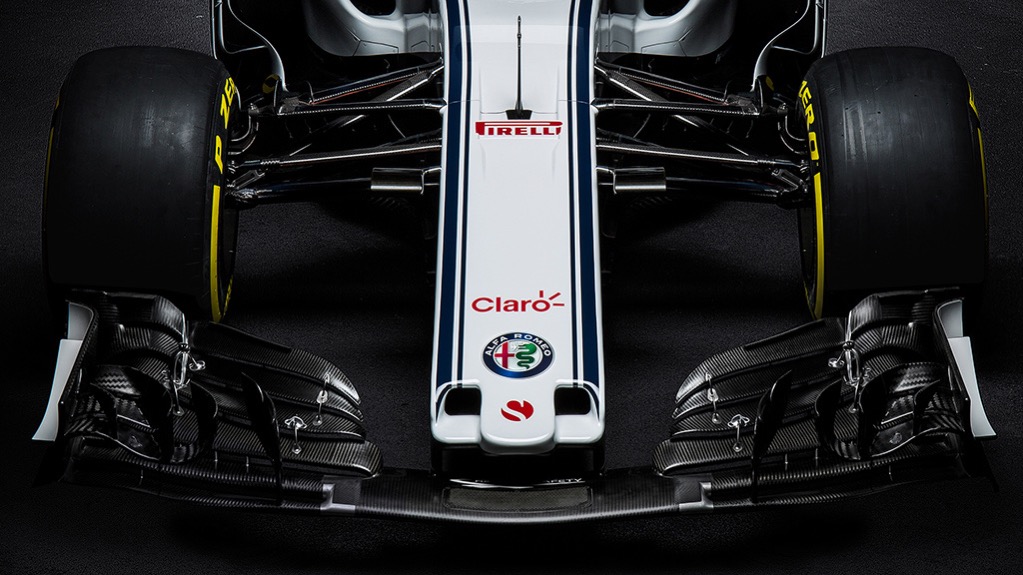 The C37 debut details start with the front wing, which shows influences from the 2017 Force India nose and wing configuration. After adopting that combination, Force India became a steady points-winning machine for the remainder of the season. Central to its transformation (and now Sauber’s) was its six-element wing component set with a very short-chord first element that protected against loss of downforce when following another car.
The C37 debut details start with the front wing, which shows influences from the 2017 Force India nose and wing configuration. After adopting that combination, Force India became a steady points-winning machine for the remainder of the season. Central to its transformation (and now Sauber’s) was its six-element wing component set with a very short-chord first element that protected against loss of downforce when following another car.
Like Force India, the Sauber’s slots either side of the nose with nostrils that duct airflow through both inlets of this S-duct and out of the two exits on the nose’s top surface. Those openings draw air from below the low nose section, decreasing negative lift and thereby increasing the efficiency of the bargeboards and the floor.
Just as Mercedes and Toro Rosso introduced in 2017, the Sauber has raised its outboard top wishbone attachment points, so the lower wishbones are higher and more horizontal. The revised mounting point, in turn, makes the wake from the front wings’ air guidance more controlled (read less turbulent) and helps the new Sauber underfloor to produce significantly more overall downforce.
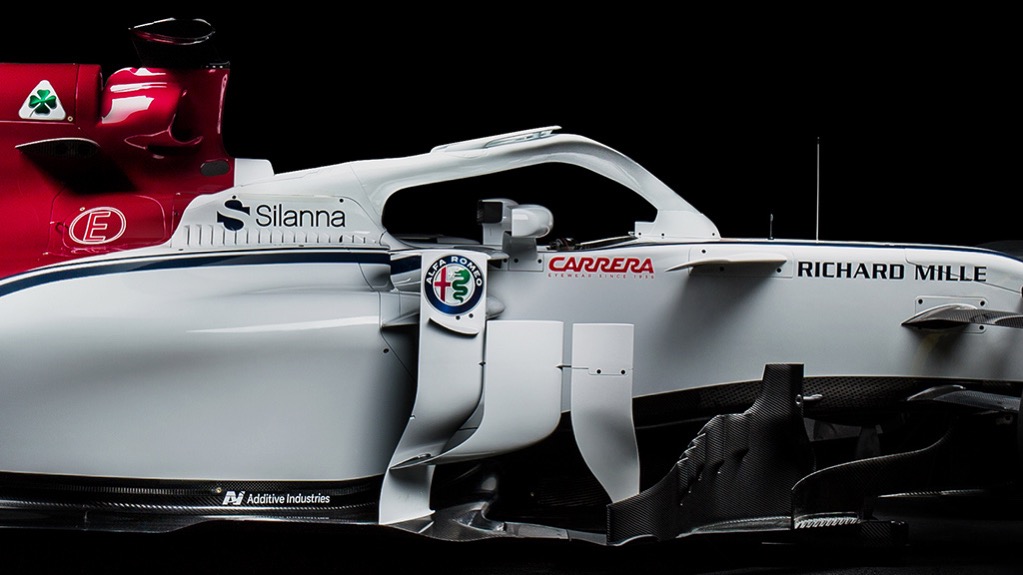 Whispers from Ferrari aerodynamicists led Sauber to follow the Scuderia’s lead by opting use less than the full permitted width of the side pods, and thus granting a significant reduction in drag. Further, both of the C37 side pods have much smaller radiator openings. It’s worth mentioning that current F1 side pods not only house radiators but cover the mandated FIA crash structures. The C37’s shorter and well-sculpted side pod profiles allow the car a better combination of good airflow due to the compact dimensions while also enabling these structures to sit as low as possible, with the smaller air inlets as high as possible.
Whispers from Ferrari aerodynamicists led Sauber to follow the Scuderia’s lead by opting use less than the full permitted width of the side pods, and thus granting a significant reduction in drag. Further, both of the C37 side pods have much smaller radiator openings. It’s worth mentioning that current F1 side pods not only house radiators but cover the mandated FIA crash structures. The C37’s shorter and well-sculpted side pod profiles allow the car a better combination of good airflow due to the compact dimensions while also enabling these structures to sit as low as possible, with the smaller air inlets as high as possible.
The bargeboards that vector airflow around the pods have familiar one-piece sawtooth-style designs with top lips that generate a small vortex at each of the openings. The flow of the vortices establishes a stable “fence” around the car, thereby sealing off the underfloor so it can generate unimpeded downforce along the entire length of the car’s regulated area.
Sauber has paid particular attention to the turbulent wakes coming off the trailing edge of the front tyres, whether they are pointing straight ahead or turning. The outer corners of both C-37 side pods have vertical elements that are very three dimensional, allowing them to handle turbulence over a full arc. The result is predictable mid-corner grip, as these elements work in unison with the bargeboards, floor and front wings to produce stable downforce just as the car hits maximum side load and just before the driver starts to add power. As mentioned before, in 2018, Sauber’s days of Austin-like sliding are history.
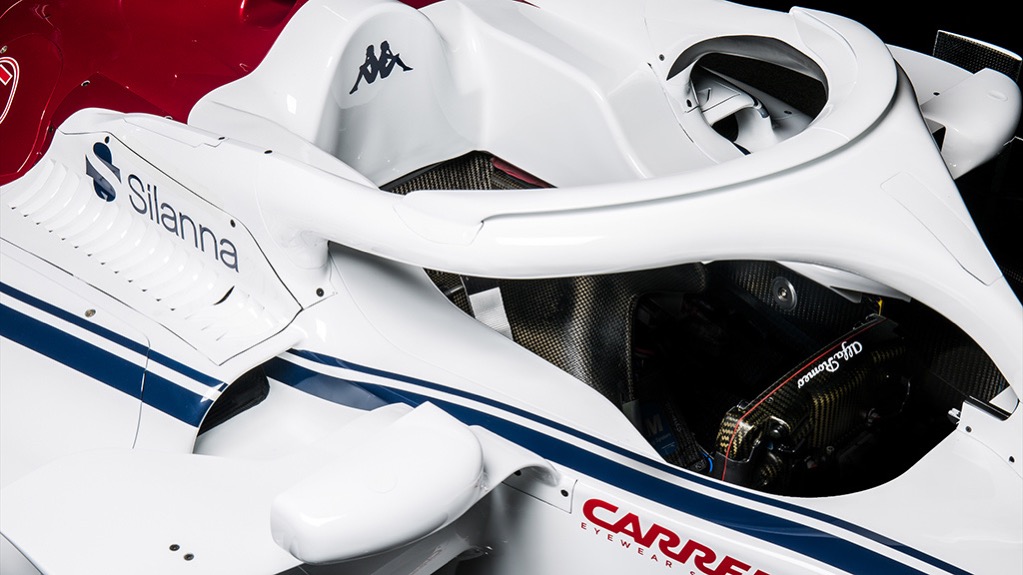 Sauber’s new safety halo takes advantage of its space with a narrow slotted flap on its top surface, modifying the roll-hoop’s round profile to a more aero-friendly oval and providing a more stable airflow into the airbox intake area.
Sauber’s new safety halo takes advantage of its space with a narrow slotted flap on its top surface, modifying the roll-hoop’s round profile to a more aero-friendly oval and providing a more stable airflow into the airbox intake area.
That minor little flip visible just above the halo’s front bar helps the Ferrari power unit’s air inlets to maintain consistent airflow and thus, more constant base pressure on the turbo. Because in a contemporary F1 car, every cubic centimetre of the machine makes a difference no matter how seemingly insignificant, that managed airflow increase the engine’s proficiency to create the turbo boost. As always, its a tenth here, a tenth there.
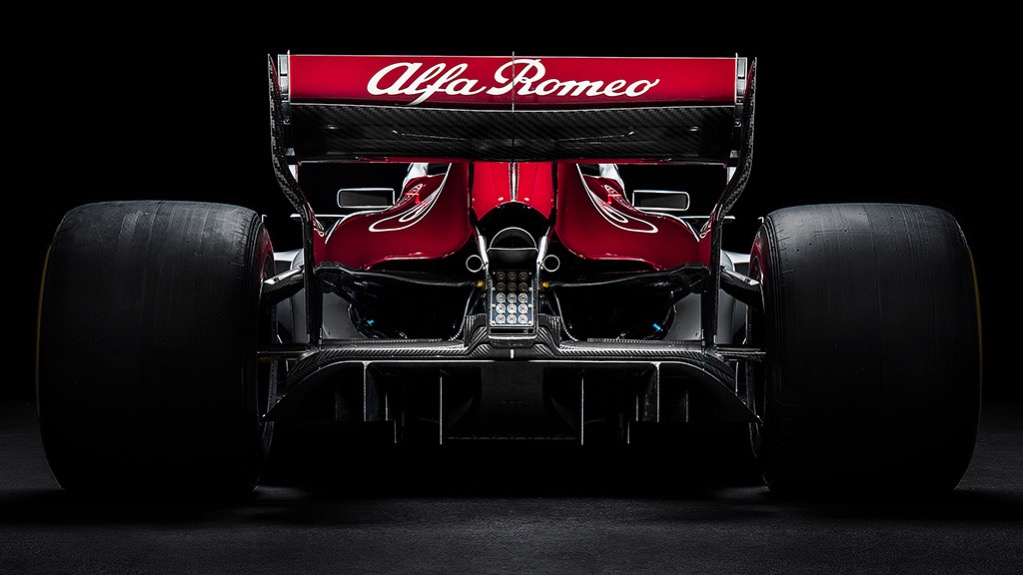 The Sauber’s rear bodywork allows the air displaced by both rear tyres to vector toward the diffuser’s upper surface, creating downforce and reducing overall drag. Details like the small slots on the floor’s top surface work with the vortices from the previously mentioned bargeboards to prevent the over-and-around-the body airflow from being pulled into the low-pressure area under the car. The more this air is kept separate, the higher the downforce of the underfloor and diffuser.
The Sauber’s rear bodywork allows the air displaced by both rear tyres to vector toward the diffuser’s upper surface, creating downforce and reducing overall drag. Details like the small slots on the floor’s top surface work with the vortices from the previously mentioned bargeboards to prevent the over-and-around-the body airflow from being pulled into the low-pressure area under the car. The more this air is kept separate, the higher the downforce of the underfloor and diffuser.
Of note is the Sauber diffuser’s trailing edge, which employs twin turning vanes shaped to speed the evacuation of the air from the beneath the car.
Thanks to Ferrari, Alfa Romeo and a score of energised aero and suspension engineers, long-suffering Sauber now shows signs of its early 2000’s hyper-competitive form. Now, it is up to Sweden’s Marcus Ericsson and Monaco’s 2017 GP2 Champion and F1 rookie Charles Leclerc to use next week’s testing sessions to plant the Sauber squarely in midfield. Accomplishing that, they’ll have the help of some very clever, and surely hungry engineers to finally chase some much-needed Constructor’s points.

